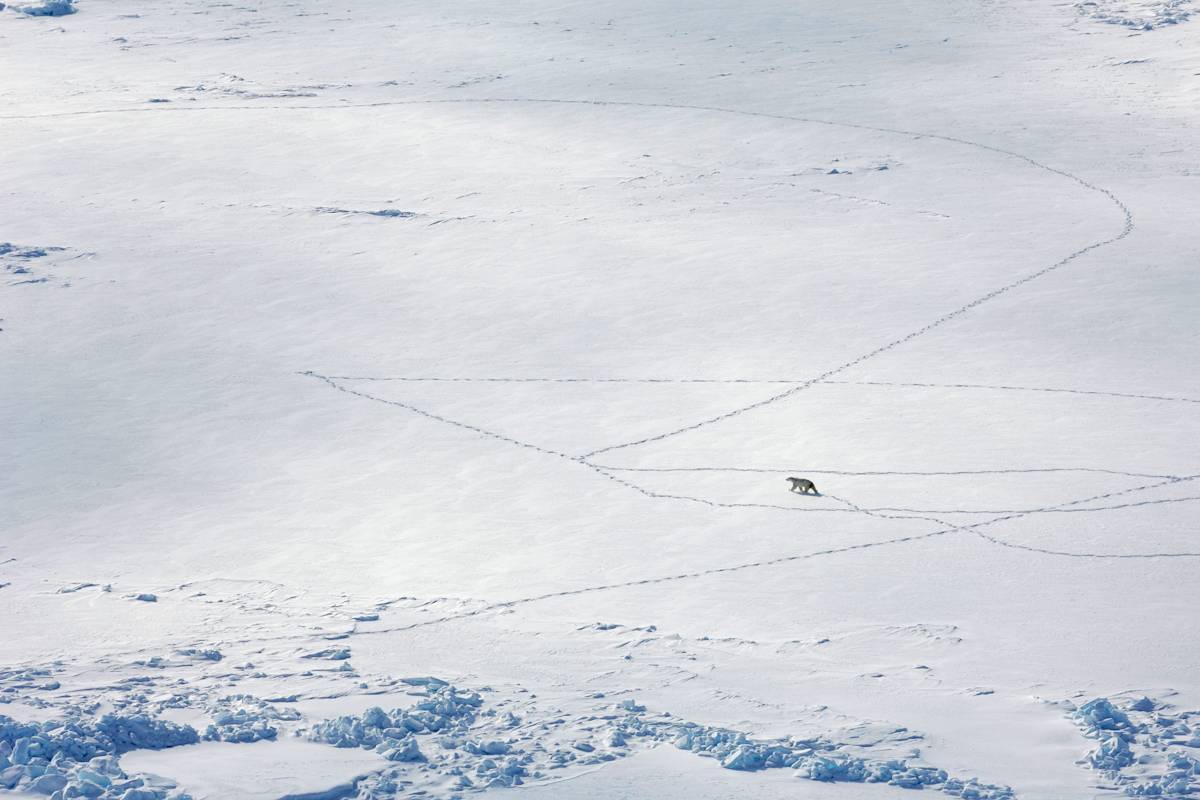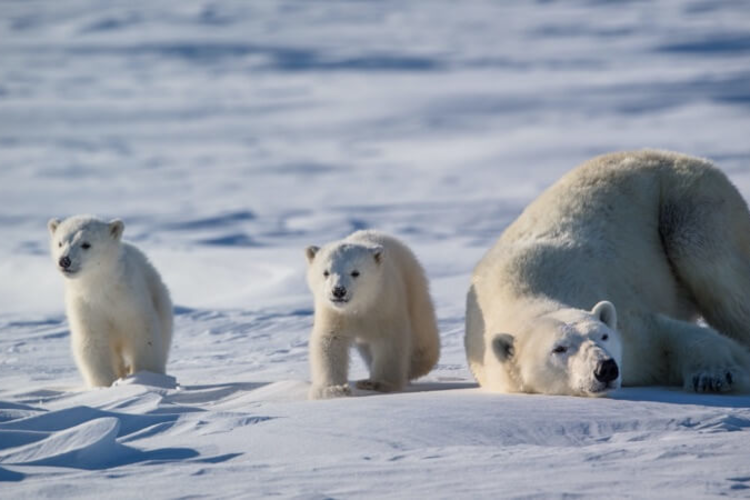Polar bears are creatures of the sea ice, and so it would be reasonable to assume that they are at their happiest and most productive when the ice is at its most extensive: during the long Arctic winter. But that is far from the case: Even polar bears can struggle in the cold and the dark.
It isn’t easy being a polar bear. The Arctic is a harsh environment at the best of times, and its dominant carnivore species has had to adapt to a cycle of plenty and paucity. For some populations such as those in Hudson Bay, summer is the least productive season of all, as sea ice melts completely and the bears are forced to come ashore to wait until it freezes again. Throughout the polar bear’s range, the most bountiful period is spring, when their seal prey spends less time underwater and more time on the surface of the ice to give birth to and nurse pups. Winter lies somewhere in between: there is plenty of ice for them to traverse and search for prey, but not much prey to be found and no easy way to access any they do come across.
Difficult hunting season
Part of the challenge facing polar bears in winter, explains Dr. John Whiteman, our chief research scientist and assistant professor of biology at Old Dominion University, is that their favored environment is ice that is expansive but fractured, with plenty of open water leads through which ringed seals can emerge.



















